Finland's capital city Helsinki has a truly fascinating history with strong influences from Sweden, the Baltics and the Russian Empire. Here's an introduction to the Helsinki of today.
It’s time to continue our journey around Scandinavia and the wider Nordic region. Today we head east to Finland, and specifically to its vibrant capital city, Helsinki.
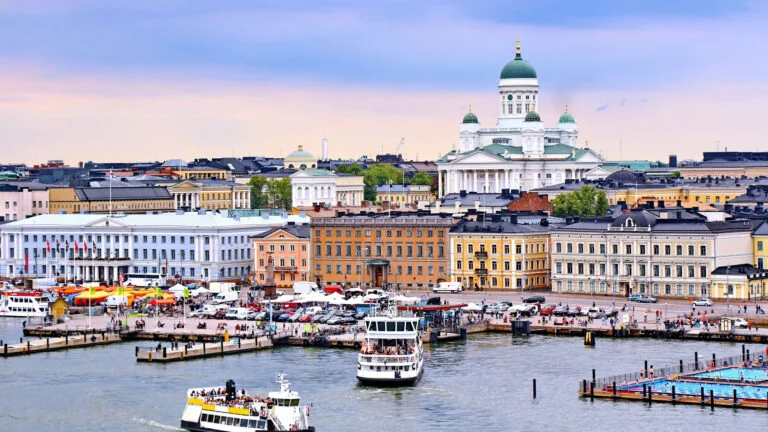
Finland is best known in recent years for topping the rankings as the world’s happiest country, but that stability is surprisingly new. Independent only since 1917, Finland has had just over a century to establish itself as a modern nation.
In that time, Helsinki has grown from a modest trading town into a confident capital that blends history, design, and a distinctly Finnish way of life.
Wander its streets and you’ll notice echoes of Stockholm’s waterfront and hints of St. Petersburg’s grandeur, yet the city always feels unmistakably Finnish. The strong sauna culture, love of nature, and pioneering design all set Helsinki apart.
Thanks to direct flights from several Norwegian cities and good connections across Europe, Helsinki is an easy city to reach for a weekend break. Curious to learn more? Here are ten fun facts that help explain what makes Finland’s capital so special.
1. Helsinki is the coldest capital in the Nordic region
Of the five main Nordic capitals, Helsinki endures the coldest winters. Average temperatures remain below freezing for much of the season, and the city’s record low stands at a bone-chilling −34.3 °C (−29.7 °F).
That might sound forbidding, yet Helsinkians have long learned to live with, and even embrace, the cold. Snow turns city parks into playgrounds for children on sleds, while the frozen shoreline attracts ice fishers who drill neat holes through the ice.
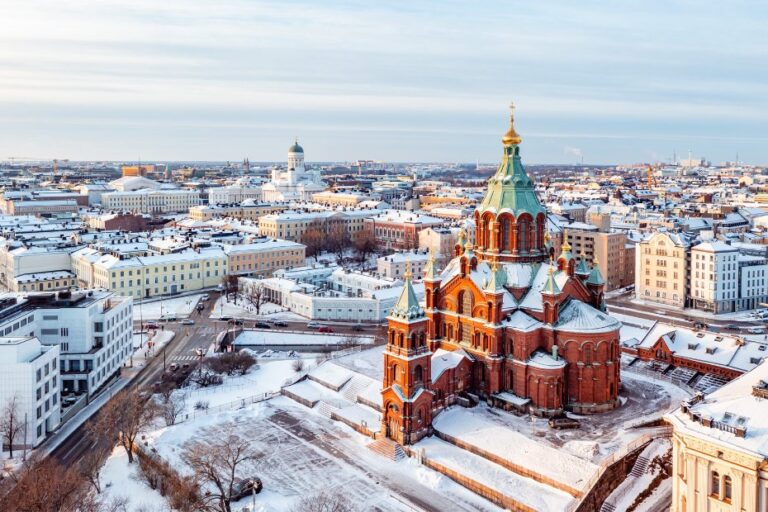
Winter swimming combined with a hot sauna is a proud local tradition that continues to grow in popularity.
The city also comes alive with winter lights and seasonal events, from Christmas markets in Senate Square to the Lux Helsinki light festival in January. Rather than slowing down, Helsinki seems to shine brightest when the temperatures are at their lowest.
2. There are saunas, everywhere
If there’s one experience that defines Finland, it’s the sauna. In Helsinki, you’ll find them almost everywhere.
They’re in hotels, leisure centres, apartment buildings, and even offices. It’s said there are more saunas than cars in Finland, and in the capital that certainly feels true.
Some saunas are sleek and modern, others are rustic and wood-fired, but all serve the same purpose: a place to relax, cleanse, and socialise.
At Löyly, a striking waterfront sauna complex, you can combine a steamy session with a plunge into the Baltic Sea. In more traditional neighbourhood saunas like Kotiharjun, the atmosphere is informal and local, giving visitors a glimpse into everyday Finnish life.
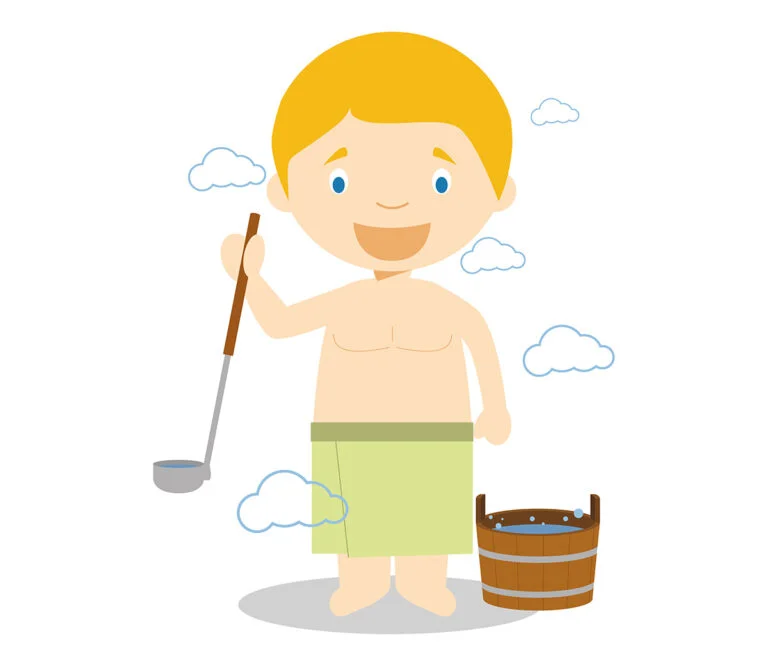
Even sport embraces sauna culture. One of the executive boxes at the city’s Hartwall Arena once featured a fully functioning sauna, so hockey fans could cheer on their team while sweating it out. Quirky? Perhaps. But for Finns, it makes perfect sense.
3. Helsinki is a Nordic design capital
Since the 1950s, Finland has been at the heart of the Nordic design movement, and many of its biggest names are closely tied to the capital.
Alvar and Aino Aalto helped shape modern architecture and furniture, Harri Koskinen created iconic glassware, and the colourful prints of Marimekko, founded in Helsinki by Armi Ratia, are instantly recognisable around the world.
Helsinki’s status was underlined in 2012 when it was named World Design Capital, a year that showcased the city’s creative spirit.
Today, that energy is still concentrated in the Design District, a neighbourhood packed with studios, boutiques, and galleries. Wandering here offers a chance to see both timeless classics and cutting-edge ideas in everything from furniture to fashion.
Design also extends into daily life. From the clean lines of Helsinki’s metro stations to the carefully considered public libraries and schools, the city itself feels like a living design exhibition — practical, stylish, and human-centred.
4. Helsinki is about the same size as Oslo
It often surprises visitors to learn that Helsinki and Oslo are very similar in size.
Helsinki proper has around 659,000 residents, while the wider metropolitan area is home to just over 1.2 million people. Oslo’s numbers are almost identical, with a slightly smaller city but a growing urban region.
What makes this comparison interesting is how differently the two capitals feel. Oslo is hemmed in by forests and fjords, giving it a compact, almost village-like character.
Helsinki, by contrast, spreads across a chain of peninsulas and islands that open out into the Gulf of Finland. That geography means the city feels airy and coastal, with sea views never far away.
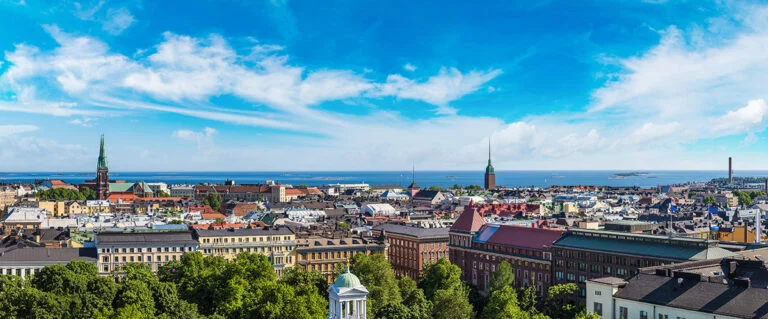
For travellers, this scale is a bonus. Helsinki is big enough to have world-class museums, buzzing nightlife, and a thriving dining scene, yet small enough that you can walk between most of its highlights in a single day.
5. Helsinki has a strong relationship with Tallinn, Estonia
Just across the Gulf of Finland lies Tallinn, the capital of Estonia, and the two cities are connected by far more than the 80 kilometres of water between them.
Ferries shuttle back and forth daily, turning the crossing into a commuter route as much as a tourist trip. Many Finns head to Tallinn for shopping and weekend getaways, while Estonians often travel the other way for work or study.
The bond between the two cities has deep roots. During Soviet times, Helsinki was one of the few windows to the West that Estonians could glimpse, sometimes literally, through Finnish television broadcasts.
Since Estonia’s independence, the relationship has blossomed into one of cultural, economic, and personal exchange.
For visitors, this proximity means you can easily add a whole new country to your Helsinki itinerary. Ferries take just two hours, and day trips are popular.
The contrast is striking: one day you might be exploring Helsinki’s sleek design stores, and the next you could be wandering Tallinn’s medieval Old Town with its cobbled streets and fortress walls.
6. The city was established by a Swedish King
Helsinki’s origins date back to 1550, when King Gustav I of Sweden decided to establish a new trading town on the Baltic Sea. His goal was ambitious: to create a rival to Tallinn, which at the time thrived under the Hanseatic League.
The settlement, however, got off to a slow start. Early Helsinki was little more than a village, overshadowed by its better-established neighbours.
It wasn’t until the 18th century that the city’s fortunes began to change. The construction of Suomenlinna, the vast sea fortress built to defend against Russian expansion, gave Helsinki new strategic importance. Then, in 1812, came the real turning point.
After Finland was ceded from Sweden to Russia, the new rulers made Helsinki the capital of the Grand Duchy of Finland. From there, the city grew quickly, shaped by both Swedish heritage and Russian influence.
Today, Helsinki’s identity is a blend of these pasts. The street names are still bilingual (Finnish and Swedish), and echoes of both empires remain visible in the city’s architecture, culture, and outlook.
7. There is a church inside a rock
One of Helsinki’s most unusual landmarks is the Temppeliaukio Church, often simply called the Rock Church.
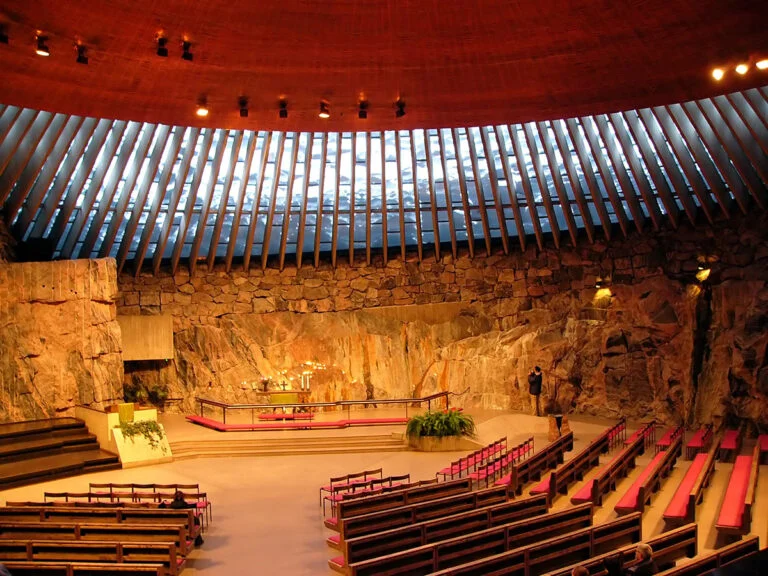
Completed in 1969, it was built directly into solid granite, with natural rock walls forming the interior. The design floods the space with natural light through a skylight that encircles the copper dome, creating a calm and otherworldly atmosphere.
The church is still used for regular services, but it has also become one of the city’s most popular attractions. Its excellent acoustics make it a favourite venue for concerts, where music reverberates off the bare stone in a way that feels both powerful and intimate.
Visiting Temppeliaukio is a reminder of how Finnish design often blends practicality with bold imagination. Few churches anywhere in the world feel quite like this. It’s part cave, part concert hall, part sacred space.
8. The library is architecturally stunning
Helsinki takes pride in its libraries, and none more so than Oodi, the central library that opened in 2018.
This striking building opposite Parliament House is much more than a place to borrow books. Designed as a “living room for the city,” it combines sleek modern architecture with warm, welcoming spaces.
From the outside, Oodi is instantly recognisable with its flowing wooden façade and vast glass walls.
Inside, the upper floor feels almost like a cloud: light-filled, airy, and lined with shelves of books that seem to float above the city. There are reading nooks, quiet corners, and panoramic views across to the national parliament and beyond.
But Oodi is also a community hub. You’ll find recording studios, 3D printers, meeting rooms, play areas, and even a cinema.
For locals, it’s a place to gather, learn, and create. For visitors, it offers a glimpse of how seriously Finland takes access to knowledge and public space, and how beautiful those values can look in architectural form.
9. The city's sea fortress is a World Heritage site
Just a short ferry ride from Helsinki’s Market Square lies Suomenlinna, a sprawling sea fortress spread across several islands.
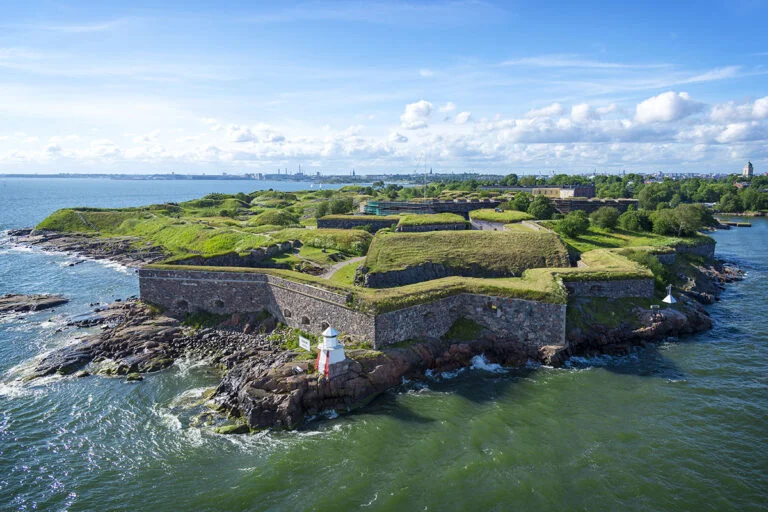
Built in the mid-18th century by Sweden as a defence against Russian expansion, it has changed hands several times through history; first Swedish, then Russian, and eventually Finnish.
Today, Suomenlinna is recognised as a UNESCO World Heritage Site, celebrated for both its scale and its historical significance.
Walking its ramparts and tunnels gives a vivid sense of the past, yet the fortress is no museum piece. Around 800 people still live on the islands, and there are cafés, workshops, and even a brewery alongside the historic walls.
For visitors, Suomenlinna is one of Helsinki’s highlights. The ferry takes just 15 minutes, making it easy to combine with a city day.
10. Helsinki is the home airport of Finnair
Helsinki Airport is Finland’s main gateway but also the home base of Finnair, the country’s flag carrier. From here, Finnair connects Helsinki to more than 130 destinations worldwide, with a network that stretches across Europe, North America, and especially Asia.
The airline has built its reputation on using Helsinki’s northerly location to its advantage. Routes from Europe to Asia are shorter over the Arctic, making Helsinki an efficient transfer point. This strategy has helped Finnair become a key player in connecting the continents.
For travellers, this means Helsinki often works as a convenient stopover hub. But if you are passing through, it’s worth allowing extra time.
The airport is known for smooth operations and Nordic touches, and the city centre is only about 30 minutes away by train, making even a short layover a chance to experience a taste of Finland.
So, that's a very quick introduction to Helsinki, by way of some fun facts. What else do you think people should know about Finland's capital city? Let us know in the comments.

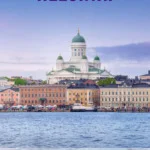

Hi,
Would you do a story about the Same people and their journey thru time as it were and where they are now in time?